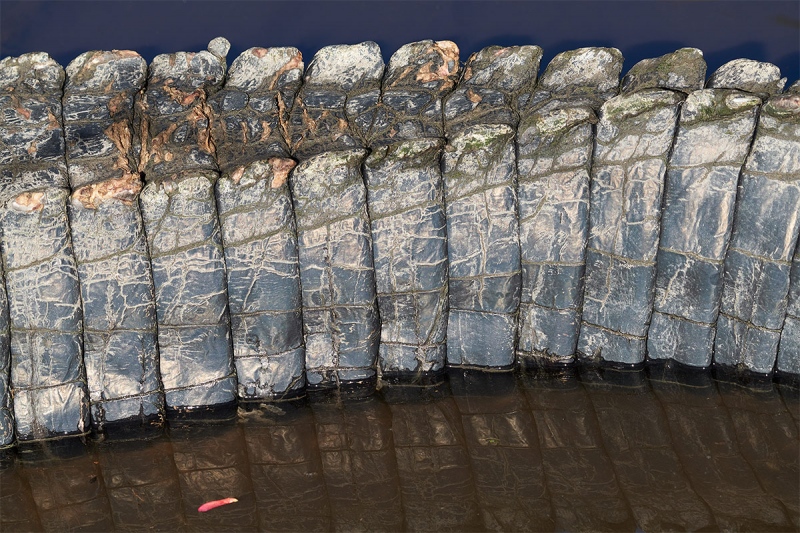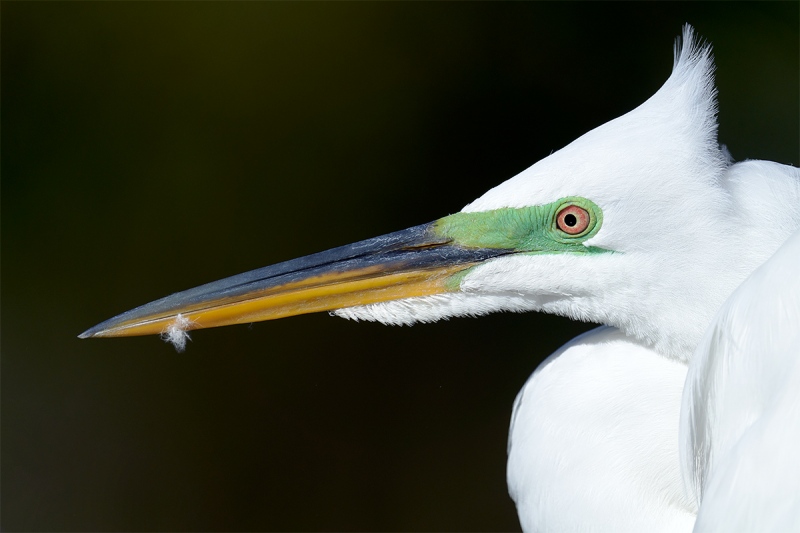What’s Up?
I’ve been swimming my 50 lengths (88 to the mile) afternoon with the pool right at 76 degrees. And I have been poking around the lakefront with my photo gear most mornings and afternoons. On Sunday I had the pleasure of meeting John and Tricia LeClair at Gatorland. See more on that below.
A $1399 Discount Offer
I am offering a phenomenal $1399 late registration discount on the first Homer IPT. $1399 is not a typo. 2 slots are open.
Please e-mail if you would like to cross off Doing the Homer Bald Eagles from your bucket list.
ILE Program Tonight!
I am presenting An Indian Lake Estates Bird Photographer’s Story tonight at 7pm at in the clubhouse at ILE:
7510 Red Grange Blvd PO Box 7395 Indian Lake Estates, FL 33855. The program will run less than one hour. I hope to see you there.
Florida Learning Opportunities
DeSoto Last-second 2-DAY IPT. Afternoon session on TUES FEB 11th through the morning session on Thursday FEB 13, 2020. 2 DAYS (2 half and one full): $1099.00. Limit 3/Openings 2.
On the last morning, there might be an option to do the super-tame American White Pelicans in Lakeland. Working brunch (included) with image review on WED and THURS. The tides are perfect and the long-range weather forecast looks pretty good FWIW 🙂
If you would like to join us, please get in touch immediately either via e-mail or by cell phone: 863-221-2372.
Morning In-the-Field Session: Thursday FEB 13, 2020
Join me at DeSoto or in Lakeland to photograph tame American White Pelicans and lots more; right now the location is your call. Morning session (6:30-9:30am) plus a working brunch: $250.00.
|
|
|
This image was created on 9 FEB at Gatorland, Kissimmee, FL. I used the hand held Sony FE 200-600mm f/5.6-6.3 G OSS lens (at 280mm) with the 61-MP monster, the Sony Alpha a7R IV Mirrorless Digital camera body. ISO 800. Exposure determined by Zebras with ISO on the rear wheel: 1/500 sec. at f/11 in Manual mode. AWB at 9:34am on a sunny morning. Flexible Spot (M) Tracking — Continuous (C) AF was active at the moment of exposure. Click to enlarge and enjoy a larger version. Image #1: American Alligator close-up of tail |
An Absolute Pleasure
It was an absolute pleasure meeting and working with John and Tricia LeClair at Gatorland on Sunday morning. We met for an In-the-Field Session at 6:45am and wound up photographing until after 11am despite the clear, too-sunny conditions. John, the more experienced photographer, had been avidly following BAA for years and had read just about everything I have ever written. He used Nikon — a 500 PF and the 80-400 VR with a D850. As I figured, Tricia had inherited his Canon gear — a 100-400 II and a 5d IV. The good news is that both were eager to learn. The bad news was that there were very few birds. Normally by this date, there would be many dozens of Great Egret nests. Yesterday there were only three and those were as close to unphotographable as you can get.
We moved around a lot and found some non-breeding birds Great Egrets here and there. We worked on exposure and did some backlit stuff. I talked Tricia into working in Manual exposure mode; like many beginners, she was somewhat afraid of it. Well, not only did she catch on quickly, she was nailing every exposure. I began calling her “The Exposure Queen.” And I was able to (correctly) talk John out of using AUTO ISO with Manual mode explaining that by using AUTO ISO you are giving up the total control that comes with using the purest form of Manual. John most enjoyed learning to see the shot. As always on IPTs II am quick to point out situations (and fine points) that excite me enough to raise my lens. John kept asking, “Why didn’t I see that?” Tricia enjoyed learning about the importance of sun angle and learning more about the buttons and dials on her 5D IV.
As there were so few birds, we took advantage of the numerous gators and did lots of teaching using them as our guinea pigs. We had some great backlit subjects and worked a ton on depth-of-field — when you need it and when you don’t. By the time we left — stopping along the way to do some birds hanging around the gator feeding and a very handsome captive parrot, we all agreed that even with the lack of nesting birds, it had been a perfect day.
Tricia was something of a birder and pointed out several Pileated Woodpeckers. I reciprocated by finding a Blue-grey Gnatcatcher, a Northern Parula, a White-eyed Vireo, and lots of Gray Catbirds. All were very difficult subjects at best. John got a half-way decent image of the parula!
We enjoyed a great working lunch at Ruby Tuesday’s. John soaked up everything that I had to say about head-angle while reviewing his images. After I had busted him a few times for creating head portraits with the bird too low in the frame with too much negative space above the bird, he busted me back for the same thing. I used my inexperience with Tracking Flexible Spot (M) as my excuse. It does take a bit of practice and a bit of getting used to; it is imperative to take great care when initially placing the AF spot on the bird’s face or eye … I finally hit the road at 1:22pm!
Image #1 Image Question
Would you have removed the tiny orange lead during post-processing? Why or why not?
|
|
|
This image was also created on 9 FEB at Gatorland, Kissimmee, FL. I used the hand held Sony FE 200-600mm f/5.6-6.3 G OSS lens and the Sony FE 1.4x teleconverter (at 840mm) with the 61-MP monster, the Sony Alpha a7R IV Mirrorless Digital camera body. ISO 400. Exposure determined by Zebras with ISO on the rear wheel: 1/2000 sec. at f/9 in Manual mode. AWB at 10:11am on a clear sunny morning. Flexible Spot (M) Tracking — Continuous (C) AF was active at the moment of exposure. Click to enlarge and enjoy a larger version. Great Egret breeding plumage head portrait |
Patience and Dallying Rewarded
I was packing my gear when I saw what looked like a very handsome bird land very close to the three existing nests. I was right — it was a gorgeous bird. The situation was a difficult one as we are shooting through very tight openings and were well off sun angle. We stuck it out for about fifteen minutes and all got something decent (including Image #2 for me). Then the bird hopped up into the clear with a blue sky background for head portraits but it did not stay long. And neither did we.
As noted here previously (though not often), with lots of light, I did just fine hand holding 200-600 with the 1.4X TC even with the more–demanding the 7R IV (as compared to the a9 ii).
Your Favorite?
Which of today’s two featured image do you like best? Please let us know what you liked best about your choice.
















Cris, it was just about a perfect day! We did not have the nesting birds we anticipated but the purpose was to learn from Artie’s vast experience more than anything else. And my wife and I did that in spades.
Thanks for all your help and patience Artie. It was phenomenal.
Thank you, John, and you are welcome. I agree, in spades. With lots of love, artie
Really like the second image Artie. The little white feather on the beak is “kinda cute”, so I’d leave that in. On my laptop monitor the whites above the eye and below the chest look blown out. Cheers.
I love the story of your day with John and Tricia. It really does sound like a perfect day, with them taking your advice on changing some of their habits and being successful with those newly learned skills. They had to be so pleased. Kudos to you. Regarding your images above, #1 is my favorite. I do those kind of shots often — getting detail in a portion of something. I definitely would leave the leaf in. I think it is the “icing on the cake,” so to speak. —Cris H.
Thanks for your thoughtful comments. And I agree about the tiny leaf.
with love, artie
Hi, Artie. I think I prefer image # 2, although both are great. I’m interested as to why you didn’t ask us about possibly removing the feather on the egret’s bill. It never would have occurred to me to remove the red-orange-pink leaf, but I would think about that feather, although I’d probably end up leaving it alone.
Typos: You ask if we’d have “remooved the tiny orange leadf…”
Number 2 is my favorite due to the color and composition. I would leave the red feather in the top image to add just that touch of color to the alligator tail.
Thanks, James. It is a tiny leaf.
with love, artie